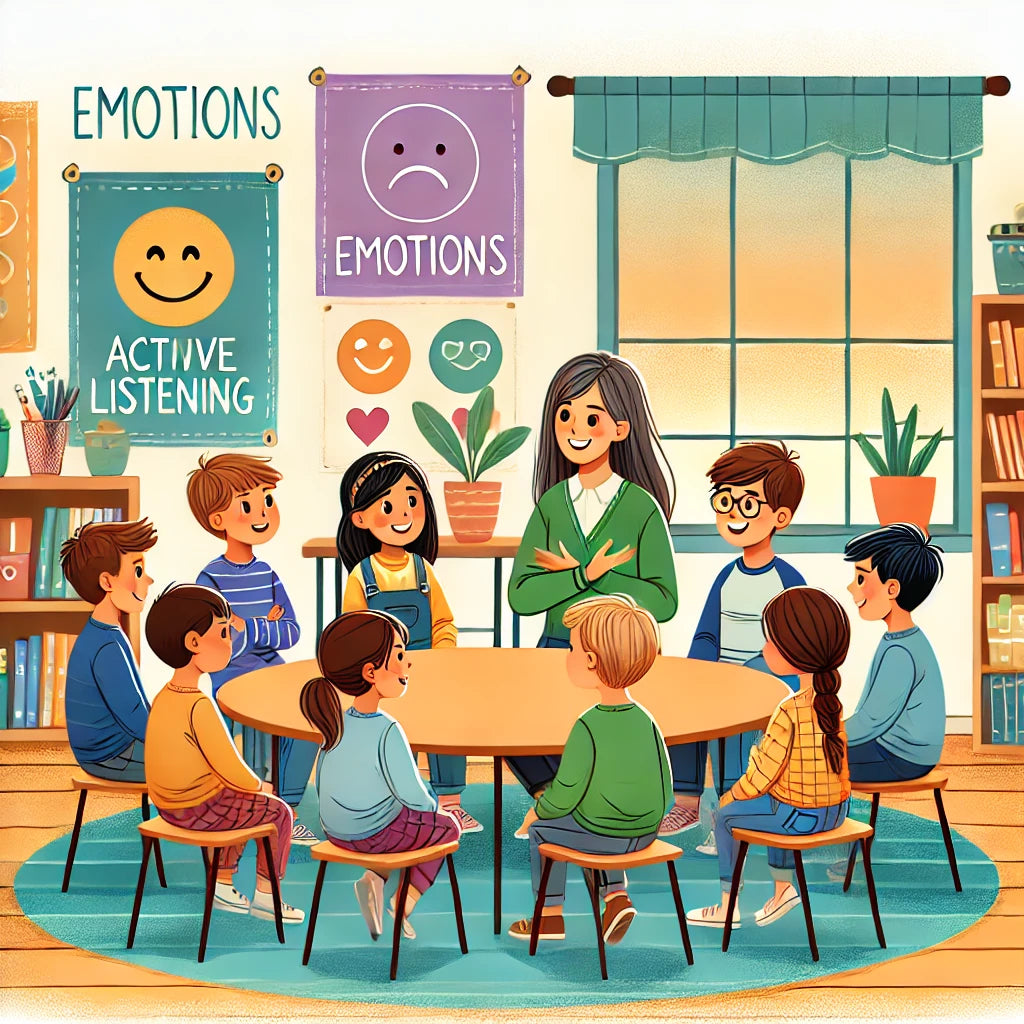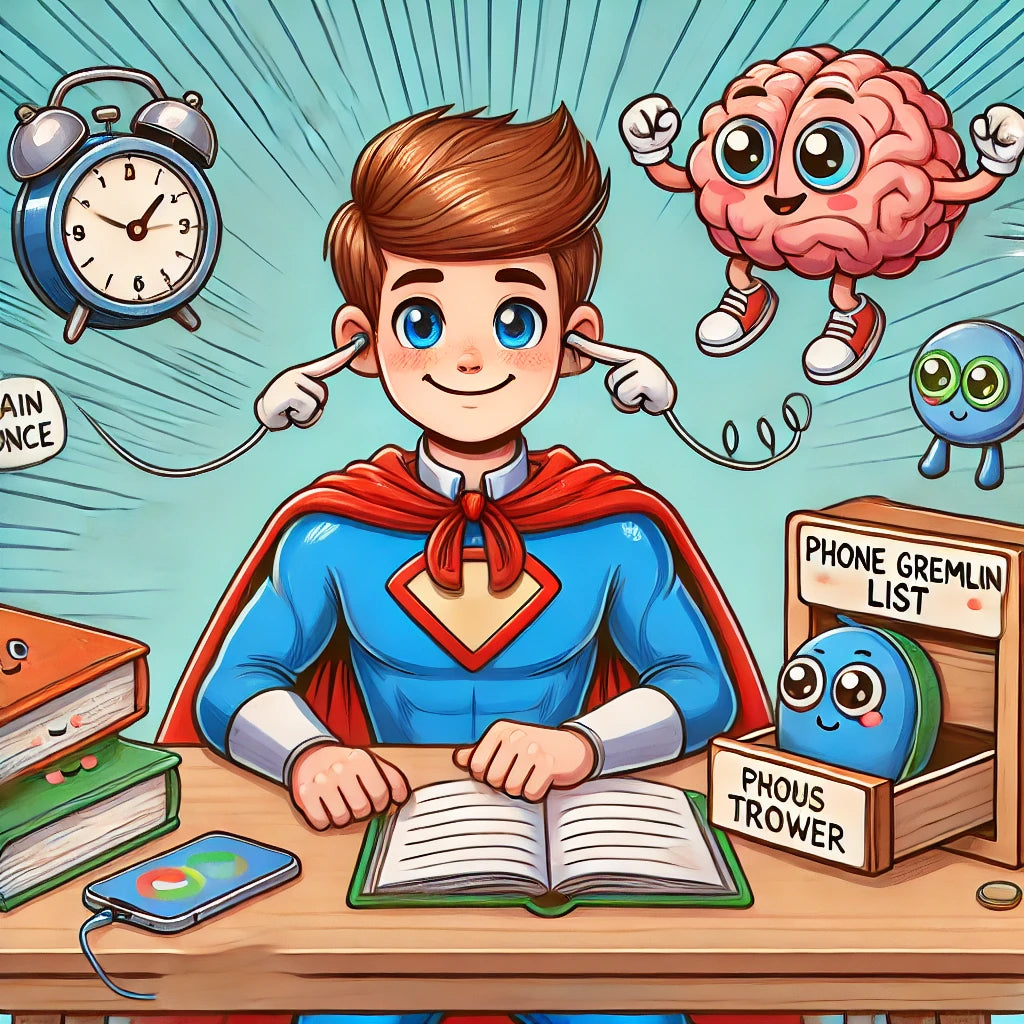Introduction:
Promoting emotional resilience in children from a young age is critical for their overall mental health and well-being. Research shows that when children are taught effective coping skills and emotional self-regulation, they are better equipped to navigate the challenges of daily life, both academically and socially. As school counselors, educators, and parents, we play an essential role in fostering an environment that nurtures these skills.
This guide offers a research-based approach to developing programs that teach effective communication, empathy, and coping skills in elementary-aged children (Grades K-5). We'll also present a practical role-playing scenario that you can use to teach students about empathy, emotional well-being, and communication.
The Importance of Emotional Resilience:
Emotional resilience refers to the ability to cope with and adapt to stressful situations or changes. Children who are emotionally resilient tend to have better social skills, greater self-confidence, and improved problem-solving abilities. They are also more likely to demonstrate empathy and regulate their emotions effectively, which are key factors for success in school and life.
Key Components of Emotional Resilience for Elementary School Students:
- Self-awareness: Teaching children to recognize their emotions and understand how these emotions influence their behavior.
- Emotional regulation: Helping students manage strong emotions in constructive ways.
- Empathy: Encouraging students to understand and share the feelings of others.
- Effective communication: Building skills to express needs and feelings in a healthy manner.
- Problem-solving skills: Teaching strategies to address challenges with confidence and creativity.
- Social connections: Promoting positive relationships and fostering peer support.
Program Development: Practical Steps for Schools and Community Programs
-
Integrate Social-Emotional Learning (SEL) into the Curriculum: SEL programs such as Second Step or Zones of Regulation teach students vital skills like managing emotions, setting positive goals, and maintaining healthy relationships.
-
Create Safe Spaces for Emotional Expression: Designate areas in the classroom or school where students can go to calm down, reflect, or talk through their feelings. Calm corners or sensory spaces are excellent tools for this.
-
Parent and Teacher Workshops: Provide training to teachers and parents on recognizing signs of stress, anxiety, or emotional distress in students, and how to support them in developing resilience.
-
Empathy and Communication Programs: Use role-playing, games, and group discussions to teach students how to understand others’ perspectives and communicate effectively when they are upset or need help.
-
Mindfulness and Relaxation Techniques: Incorporate mindfulness exercises, breathing techniques, and relaxation strategies into daily classroom activities to help children develop emotional regulation skills.
Role-Playing Scenario: Teaching Empathy and Communication Skills
This activity is designed for a group of students (Grade 3 and up) but can be adapted for younger grades with simpler language.
Objective:
To help students practice active listening, empathy, and effective communication when responding to a peer who is upset or experiencing strong emotions.
Scenario Set-Up:
Situation: A student (let’s call them Jamie) is upset because they didn’t do well on a test, and they feel embarrassed and worried. The other student (Alex) will practice using empathy and active listening to support Jamie.
Step-by-Step Guide:
-
Introduce the Scenario:
Explain to the students that they will be role-playing a situation where someone feels upset and needs a friend to listen and help.- Jamie is feeling frustrated and embarrassed because they received a lower grade than they expected on a test.
- Alex, their friend, notices this and wants to help.
-
Explain Active Listening and Empathy:
Before starting, explain the two key skills they will practice:- Active Listening: Looking at the person who is speaking, not interrupting, and showing that you are paying attention (nodding, saying “I understand”).
- Empathy: Trying to understand how the other person feels and responding in a kind, supportive way. For example, saying “I understand why you’re upset” instead of “It’s not a big deal.”
-
Role-Play the Scenario:
Choose two volunteers to act as Jamie and Alex (or the counselor can model the roles with another adult first). Jamie should express their frustration and worry about the test grade, while Alex practices listening and offering empathetic responses.Jamie: “I feel so embarrassed. I got a really bad grade on my test, and now I think everyone’s going to think I’m not smart.”
Alex: (Active listening) Looks at Jamie and says, “I understand why you feel embarrassed. I would feel that way too.” Then continues with a supportive comment: “But one test doesn’t mean you’re not smart. You worked really hard.”
-
Debrief the Role-Play:
After the role-play, discuss with the group:- How did Jamie feel when Alex listened and was empathetic?
- How could Alex help Jamie feel better and work through the problem?
- What could Alex say or do differently if they found it difficult to know what to say?
-
Group Reflection:
Ask students how they would feel if they were in Jamie’s shoes. Would they appreciate a friend like Alex? What are other ways to help a friend who is feeling upset? -
Expand the Discussion:
You can expand the scenario by introducing more complex emotions or situations, such as helping a friend who feels left out at recess or someone who is nervous about giving a class presentation.
Additional Resources for Supporting Emotional Resilience:
- Books for Classroom Libraries: Books like "The Invisible String" by Patrice Karst or "A Little Spot of Emotion" by Diane Alber teach children about managing emotions and relationships in an engaging way.
- Parent-Teacher Communication: Encourage regular communication between parents and teachers about students' emotional well-being. Use simple check-in tools like mood meters or emotion charts to assess how students are feeling on a daily basis.
Conclusion:
By integrating emotional resilience programs into the classroom and home environments, we equip children with the skills they need to navigate challenges, both academic and social. Through empathy-building activities like the role-play scenario presented above, school counselors, teachers, and parents can help children develop the emotional awareness and communication skills that will support them throughout their lives.
Call to Action:
School counselors, educators, and community program leaders, let’s collaborate to build emotionally resilient students who can not only cope with stress but also thrive in their academic and personal lives. Together, we can create nurturing environments that foster emotional well-being in every child.





Leave a comment
This site is protected by hCaptcha and the hCaptcha Privacy Policy and Terms of Service apply.